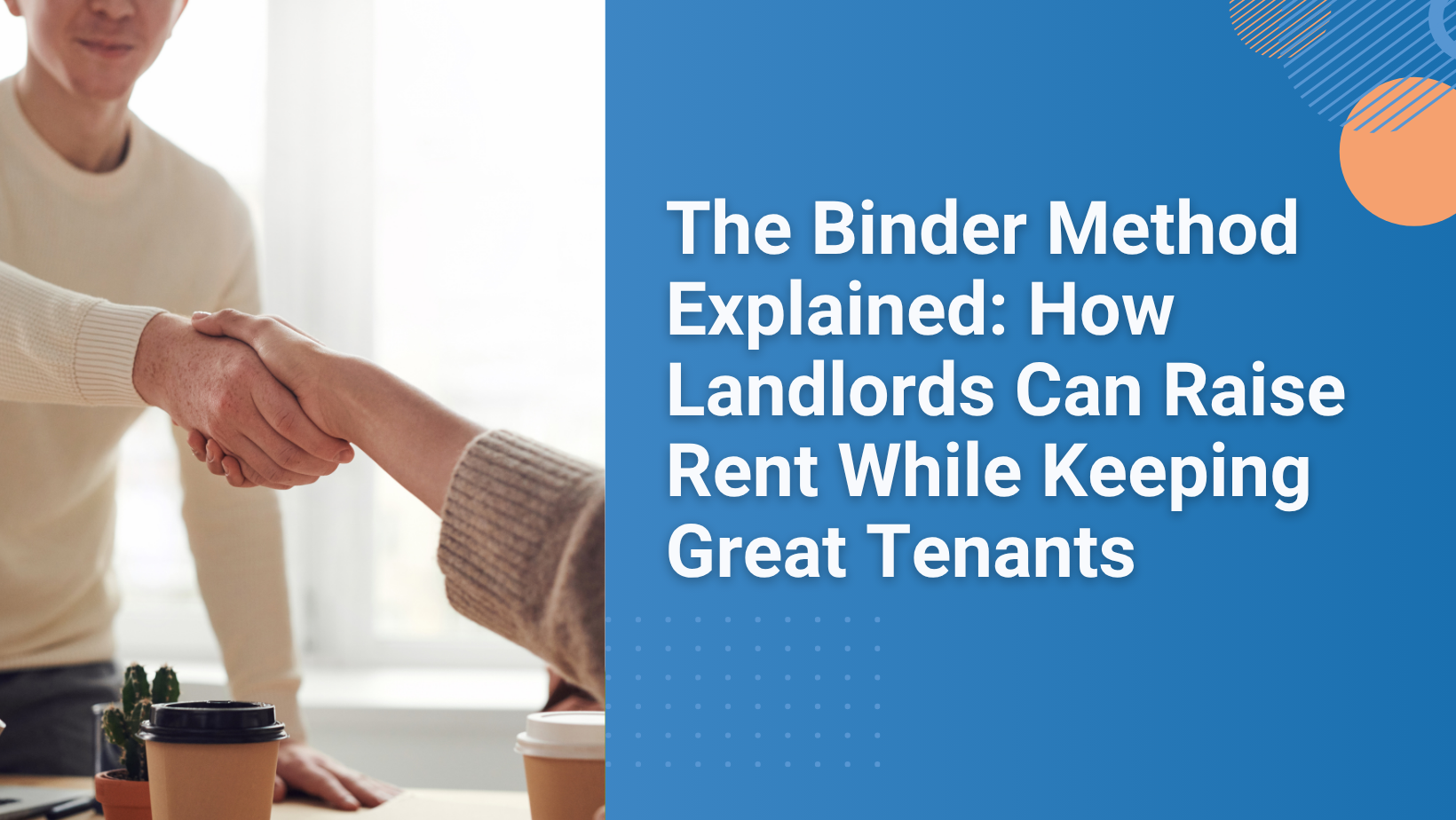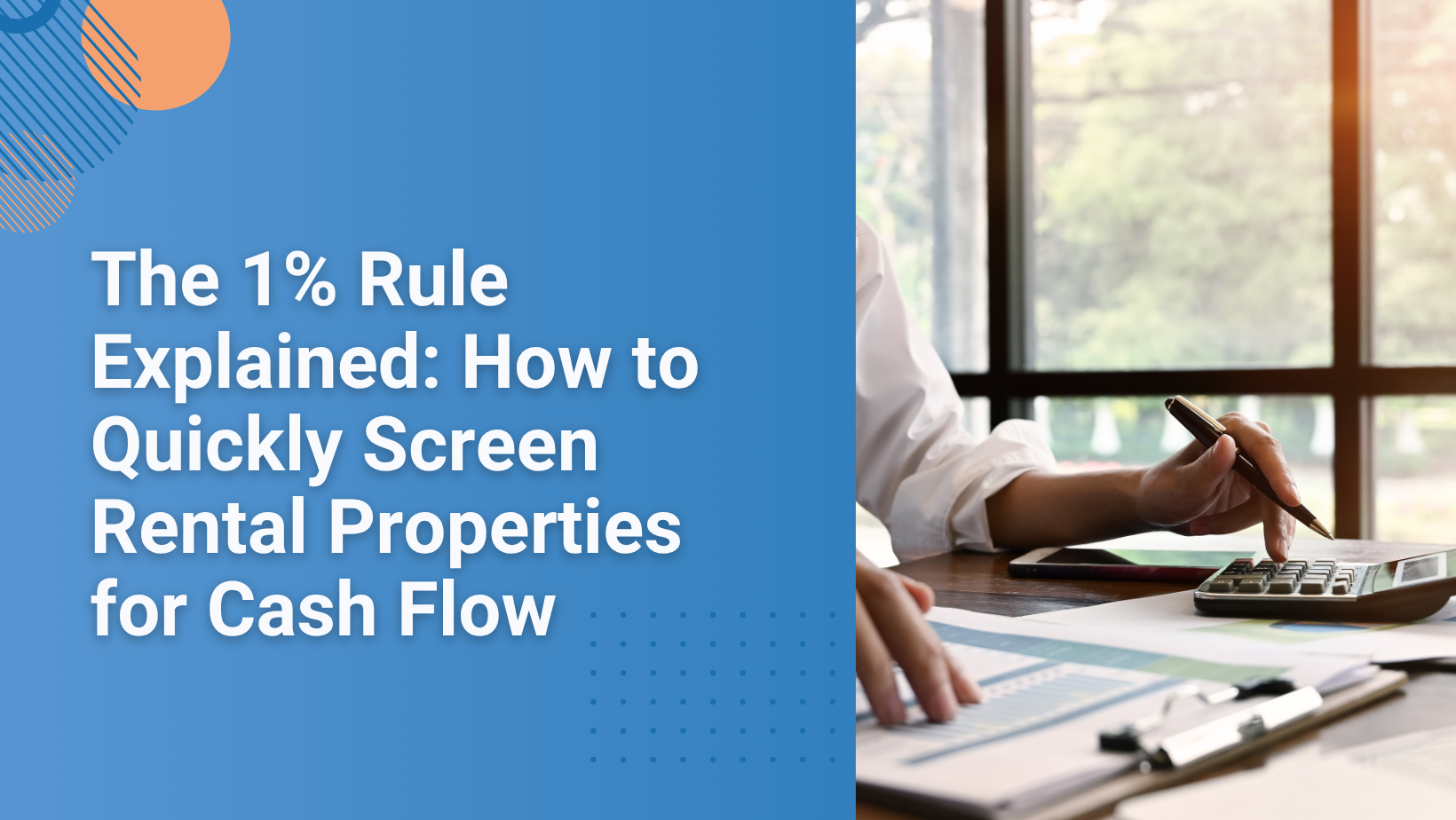
How Much Can You Increase Rent? A Landlord’s Guide to Pricing, Market Trends, and Regulations

Owning an investment property isn’t just about collecting rent—it’s about managing it professionally. A key part of long-term success is making strategic price adjustments that reflect market trends while keeping properties competitive and profitable.
Raising rent isn’t just about making more money; it helps maintain property value, cover rising costs, and keep your rental income aligned with inflation. However, rent increases must be handled fairly, legally, and based on accurate market data to keep tenants satisfied while maintaining profitability.
So when can a landlord increase rent? How do you know if it's the right time? How much should you increase rent by? Let’s dive in.
When Can You Increase Rent?
Most residential leases in the U.S. are fixed-term leases, typically lasting 12 months. In these cases, landlords cannot raise rent during the lease term unless the agreement explicitly allows it (which is rare). Rent increases can only take effect when the lease is renewed at the end of its term.
Stay connected
Get rental market insights delivered straight to your inbox.
For month-to-month leases, landlords have more flexibility and can increase rent with proper notice, typically 30 to 60 days in advance, depending on state and local laws.
Some cities and states have rent control or rent stabilization laws that limit how often and by how much landlords can raise rent—even after a lease expires. Before adjusting rent, it’s essential to check local regulations to ensure compliance.
When Should You Raise Rent—And By How Much?
While landlords are legally allowed to raise rent when a lease ends, the real question is: should they? Deciding how much to increase rent isn’t just about what’s allowed—it’s about what makes sense based on market conditions, tenant retention, and property value.
Since real estate trends are hyperlocal, there’s no one-size-fits-all strategy for rent adjustments. Landlords must analyze city-wide trends, neighborhood shifts, and even block-level changes to make informed decisions.
Key Factors in Determining Rent Increases
1. Market Rents Are Rising
If similar properties in your area are renting for significantly more than yours, it may be time to adjust your rates. The best way to determine this is by checking hyperlocal rent comps using tools like Rentometer.
💡 How Much Should You Raise Rent?
- Compare your property’s rent to similar units in your area.
- If you’re far below market rates, you may be able to increase rents gradually over multiple lease renewals rather than all at once.
- Be mindful of local rent regulations, which may cap rent increases in certain citie
2. Neighborhood Growth & Increased Demand
Has your area seen new restaurants, retail spaces, public transit expansions, or an influx of residents? A growing neighborhood typically drives higher demand and justifies a rent increase.
💡 How Much to Increase?
- If your area is becoming more desirable, small incremental increases (e.g., 3-5%) may be reasonable, even if comps don’t show a dramatic shift—anticipating demand can keep you ahead of the market.
3. Inflation & Rising Property Costs
Property taxes, insurance, and maintenance costs tend to increase yearly, and landlords must adjust rent accordingly to avoid cutting into profits.
💡 How Much to Increase?
- If your expenses have risen significantly, you can factor that into your pricing strategy while staying competitive with market rates.
- However, in a renter’s market (where supply exceeds demand), it may be wiser to accept lower profit margins temporarily to maintain tenant stability rather than pricing yourself out of the market.
4. Property Improvements = Justified Rent Increases
Not all rent increases are based on comps—sometimes, they’re based on added value. Tenants are more willing to accept price adjustments when they see tangible benefits from improvements.
💡 How Much to Increase?
- If you’ve renovated units, added high-end appliances, improved amenities, or upgraded common areas, you can justify a higher increase—potentially 5-10% or more, depending on the value added.
- If competing properties lack similar upgrades, you may be able to price slightly above market comps for a premium offering.
5. Vacancy Rates & Market Supply
If rental units in your area are filling up quickly, it indicates strong demand, meaning you can increase rent with minimal risk of tenant turnover.
However, if many new units are hitting the market, vacancy rates may rise temporarily, putting downward pressure on rents.
💡 How Much to Increase?
- If vacancies are low and demand is high, you can comfortably raise rent to match or slightly exceed market rates.
- If vacancies are rising in your area, a more modest increase (1-3%) or keeping rates steady may be the smarter move to ensure tenant retention.
Examples of U.S. Cities with Rent Control & Caps on Rent Increases
Many cities and states in the U.S. regulate rent increases to protect tenants from excessive hikes. If you’re a landlord, it’s crucial to check local laws before raising rent. Here are some notable examples:
📍 New York City, NY (Rent Stabilization)
- Rent-stabilized apartments (about one million units) have strict limits on annual rent increases.
- The NYC Rent Guidelines Board sets allowable increases each year.
- For leases starting in 2024-2025:
- 1-year lease: Max 2.75% increase
- 2-year lease: Max 5.25% increase
- Unregulated units (market-rate rentals) do not have caps, but landlords must provide proper notice for increases.
📍 San Francisco, CA (Rent Control & Just Cause Eviction)
- Properties built before June 13, 1979, are covered by rent control laws.
- In 2024, the max annual increase for these units is 3.6%.
- If a landlord raises rent by more than 10%, they must give 90 days’ notice instead of 30.
- Statewide cap: Under California’s Tenant Protection Act (AB 1482), rent cannot increase by more than 5% plus inflation (capped at 10%) per year.
📍 Los Angeles, CA (Rent Control & Statewide Cap)
- Rent-stabilized buildings (pre-October 1, 1978) have strict caps set by the LA Rent Stabilization Ordinance (RSO).
- In 2024, landlords can increase rent by 4% for rent-stabilized units.
- California’s AB 1482 applies to non-stabilized units, capping rent hikes at 5% + inflation (max 10%) per year.
📍 Portland, OR (Statewide Rent Cap & Relocation Fees)
- Statewide cap: Oregon law limits rent increases to 7.6% in 2024 (adjusted annually for inflation).
- If a landlord increases rent by more than 10%, they must pay tenants relocation assistance fees (typically $2,900 - $4,500, depending on unit size).
📍 Washington, D.C. (Rent Control & CPI-Based Adjustments)
- For rent-controlled units, increases are limited to CPI (Consumer Price Index) + 2% (about 6.2% in 2024).
- Senior citizens & disabled tenants get even lower caps—CPI only (max 5%).
- Market-rate rentals are not restricted, but landlords must give 30 days' notice for increases over 10%.
Typical Annual Rent Increases
While rent growth varies by region, here’s how rents changed nationally according to Rentometer's latest single-family rental report:
- 2022: +7.1% (average rent increase per year)
- 2023: +4.0%
- 2024: +0.8% (smallest increase in years)
Regional Trends
📍 Midwest ➝ +5.26% (strongest growth)
📍 Northeast ➝ +4.84%
📍 Pacific ➝ +2.12%
📍 Rocky Mountains ➝ +1.75%
📍 Southeast ➝ +0.62%
📍 Southwest ➝ -0.09% (slight decline)
Local Trends:
📍Los Altos, CA ➝ +14.1% (very strong growth)
📍Buffalo, NY ➝ +10.9%
📍Staten Island, NY➝ +8.0%
📍 St. Louis, MO ➝ +5.9%
📍 San Francisco ➝ -1.2% (slight decline)
📍 Austin ➝ -4.3% (substantial decline)
What This Means for Landlords: Not all areas are experiencing the same rent trends. Some markets are still growing, while others are stabilizing or even declining. Check hyperlocal rent data using Rentometer before deciding on an increase.
Negotiating Rent Increases
It’s important to give tenants ample time to consider their options when increasing rent. They may be agreeable, attempt to negotiate, or elect to move out in search of housing better aligned with their budget.
After being alerted of an increase, your tenant may come back with a counter offer. Here's how to handle rent negotiations with tenants to help you navigate these conversations effectively.
It’s important to contemplate your options. If your tenants are respectful, kind and always pay on time, you may compromise slightly to keep them.
Calculating Rent Increases with Rentometer
When raising rent, it is advisable to present clear data to substantiate the decision. Tools like Rentometer can aid in providing comparable market data to justify rent adjustments.
When it's time to nail down a number for your increased rental rate, Rentometer makes it simple.
- Head to https://www.rentometer.com/
- Enter your unit’s address and the number of bedrooms and bathrooms
- Rentometer will provide hyperlocal data comparing similar properties in your area.
Rentometer provides data to help you see what comparable properties in your area are being rented for. If you find yourself charging well below your rental comps, this data can help determine a more suitable price. You can also export the data into a printable PDF to share with tenants when justifying increases.
In Conclusion…
Raising rent is a crucial aspect of property management that can significantly impact a landlord’s financial stability and investment success. By carefully monitoring local market trends, economic conditions, and property improvements, landlords can make data-driven decisions about rent increases. While tenant satisfaction is important, maintaining a profitable property requires a balance between fair pricing and market demands. By staying informed, following legal guidelines, and using tools like Rentometer to back up your decisions, landlords can ensure their rent increases are reasonable, justified, and ultimately beneficial for both parties.
The information provided in this article is for informational purposes only and does not constitute legal, financial, or professional advice. The rent increase recommendations, market trends, and examples are intended as general guidelines based on publicly available data and should not be interpreted as definitive pricing strategies. Landlords should always verify local regulations, consult with a legal or real estate professional, and review lease agreements before making any rent adjustments. The authors and publishers assume no liability for decisions made based on this information.
Stay connected
Get rental market insights delivered straight to your inbox.

 LinkedIn
LinkedIn
 Facebook
Facebook
 Email
Email
 Twitter
Twitter
 Quickly evaluate current rents with QuickView™ Rent Estimates
Quickly evaluate current rents with QuickView™ Rent Estimates

